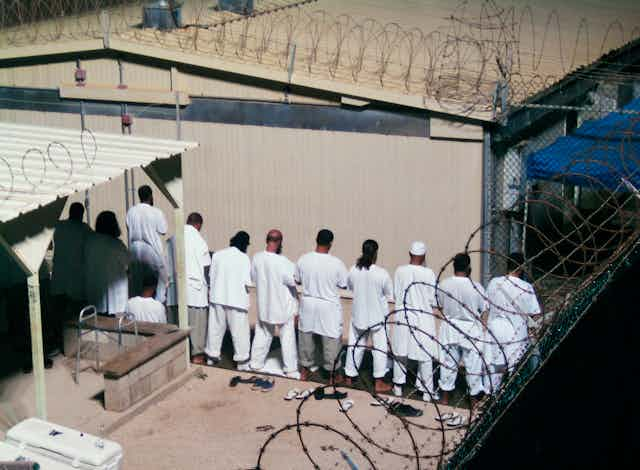From “shoebomber” Richard Reid, to Abdelhamid Abaaoud, the ringleader of the attacks in Paris, there seem to be increasing examples of people becoming “radicalised” in jails. So how concerned should we be about the role of prisons in producing violent extremists?
Contrary to those who argue that jails are at risk of becoming “universities of terror” there is actually relatively little systematic evidence of a link between prison and involvement in terrorism.
That is not to say that apparently “radical” groups have not developed in prisons, or that there haven’t been efforts to recruit people to militant Islamism in UK jails. Jamaal Uddin, who was convicted for assault and enforcing a “Sharia-controlled zone” in east London, boasted of his ability to “radicalise” people in the face of apparently powerless authorities. In the worst cases, such as in Iraq where several American-run detention facilities became pivotal in the development of what was to become Islamic State, prisons have been intimately implicated in terrorism.

However, rather than assuming jails are “terrorist incubators”, it’s more helpful to understand involvement in apparently radical groups as both a function of prison governance and part of the normal dynamics of life behind bars. Jail can be a dangerous place, and many prisoners seek the protection of gangs. This is a particular problem for Muslim prisoners who, because of stereotyping and prejudice, can experience greater feelings of insecurity.
In these circumstances, joining forces with a cohesive and sometimes powerful group that can address their physical and psychological needs makes sense. In the words of one prisoner interviewed for a report on staff-prisoner relations:
You take a bunch of people who are already disenchanted with life. They have no real sense of identity … They have no connection to the world, so they basically tell the world to fuck off and do their own things. Drugs, joy ride in cars, whatever … Take them out of society and stuff them in a box… Along comes somebody who says: “Yes, this is how you can belong. This is how you could have worth. This is how you can show the rest of the world how they got it wrong”. Bam – bomb in your shoe, onto a plane, boom.
No easy answers
But, the road from involvement in an apparently radical prison gang to carrying out an actual attack is far from straightforward. Although there may be some cases of individuals taking this path, the story is always more complex than it first appears. Even when someone expresses a commitment to particular “extreme” ideas, it in no way means that they are likely to act on those beliefs. In fact, on release, most prisoners who have been involved in “extremist” gangs return to their previous lives without any further involvement in radicalism.
As well as issues of personal safety, prison governance also plays a part. Where there have been examples of radical networks developing in jails, there are often serious problems with the way they are run. In America, there are noticeable differences in the risk of radical networks gaining a foothold, depending on how the prisons are managed. Where there are meaningful activities and rehabilitation programmes, the problem is far less acute than in prisons where such provision is not in place.
That is not to say that there are not real and valid concerns over the potential for extremist recruitment in prisons. But these need to be kept in proportion, particularly because anxiety over radicalisation can make matters worse. Observers who, for example, perceive conversion to Islam or increasing religiosity as indicators of extremism, can harden attitudes and decrease trust between prisoners and staff.
Islam as a force for good
Conflating religiosity and radicalisation also overlooks religion’s role as a protective factor. A commitment to Islam has actually been found to offer a moral framework through which the individual can turn their life around, as well as enabling them to deal with prison life more effectively and reduce aggression.

Even Abdelhamid Abaaoud’s lawyer felt that his increasing commitment to Islam had, initially at least, played a positive role in his life after repeated convictions for petty crime.
The exact circumstances by which Abaaoud became convinced of the need for violence are far from clear – and we may never understand what, or who, influenced him. What the evidence does seem to suggest however, is that the link between prison and terrorism is complex and far from linear.
Where there are genuine concerns over an individual’s commitment to violent extremism, careful and thoughtful intervention is important. Although we are still learning what might be effective in facilitating disengagement from extremism, supporting prisoners when they’re released into the community, and finding ways of reintegrating them into society is vital if we are to avoid “terrorist recidivism”.

